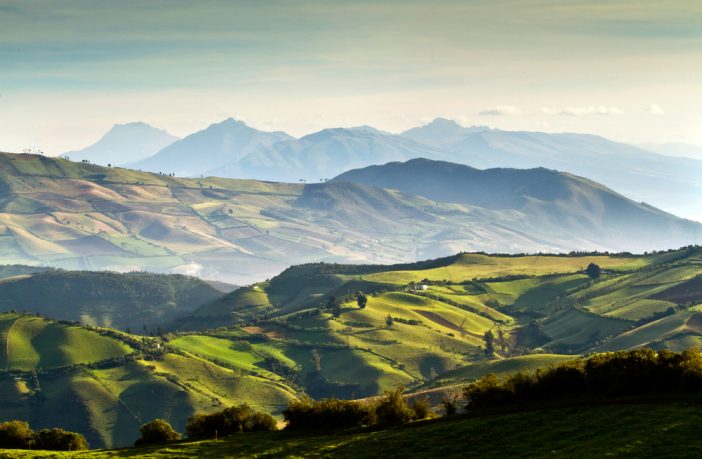Research involving scientists from The Open University (OU) published today in Science brings us closer to understanding how the complex interactions between topography (especially mountain ranges) and climate change influence the evolutionary histories and biodiversity of species in the Earth’s natural ecosystems.
In a major step forward, the international team of researchers from the University of Connecticut, the Federal University of Goiás in Brazil and the OU have built a computer simulation that takes many of the fundamental factors driving evolutionary adaptation and extinction into account.
“In our simulation, we hoped to be able to model the most fundamental processes that shape the geography of life on Earth,” says Robert Colwell, emeritus professor of ecology and evolutionary biology at the University of Connecticut, who led the research with Brazilian colleague Professor Thiago Rangel, in collaboration with Dr Neil Edwards and Dr Philip Holden at the OU.
The OU researchers played a vital role in the project, combining conventional and statistical approaches to model, for the first time, the changing climate of South America in detail over hundreds of millennia, far longer than ever before. The model spans 800,000 years, to the earliest ice-core records, and estimates temperature and precipitation every 500 years during repeated glaciation and thawing cycles, in a period called the late Quaternary.
Dr Holden explains:
“A sufficiently long climate model calculation has never been possible before – it would need decades of computing. We have now developed a fast statistical climate model that overcomes this challenge.”
Understanding how new species arise, survive or die
Speciation, or the evolution of new species from ancestral species, is made complicated by various factors such as changes in climate, or geographical and topographical features of the landscape. Over time, new species arise, persist, expand to new areas, or become extinct, and the reasons why these events occur, and how these factors are involved, are not always clear.
In this study, the team estimated the lifetime trajectory of species, starting with its origin, and ending at one of three points: when the species splits into two distinct species, goes extinct, or persists to the present day. At each point of the simulation, the location of each species was recorded.
Their findings revealed that the trajectories were driven by the glacial cycles, leading to episodes of origination and extinction – which the researchers called ‘cradles’ and ‘graves’ of diversity. The researchers think the most likely explanation is the strong influence of changing climate during the glacial cycles, as it interacts with the topography of the landscape. Changes in temperature and precipitation will impact on the area a species inhabits, fragmenting, shuffling, and eliminating them, regardless of the species’ age.
South America – a haven of rich biodiversity
To develop and test their model, the researchers studied the most climatically and biologically diverse continent on earth, South America. As the Andes mountain range began to develop 25 million years ago, it created a varied landscape that gave rise to a rich biodiversity, and the perfect setting to study how it arises.
Professor Rangel explains:
“The Andes is the longest mountain range on Earth, and the only trans-tropical one. It sits right beside the Amazon, the planet’s largest tropical rainforest and river basin. This is the reason South America has such exuberant biodiversity.”
The findings reflect biodiversity in the present day
Surprisingly, the researchers found the model could reproduce maps of biodiversity that closely resemble maps of present-day species of birds, mammal, and plants.
Professor Colwell says:
“The majority of living species in South America are more ancient than 800,000 years, but our results suggest that even the ancient species have been moved around in the same way as younger species, all contributing the same patterns of species richness.”
Close links between evolution and the physical environment
Dr Edwards explains:
“Our results demonstrate how intimately the evolution of life depends on the changing physical environment. Understanding better what drives biodiversity may have important implications for conservation.”
This model comes at a crucial time, one of unprecedented human driven climate change. And while this pace of human climate change is faster than anything in this model, this research really shows the dynamic power of climate change and the ways it shapes life on Earth.
Find out more
Read the full paper in Science
Read more about our environment, Earth and ecosystem research
Professor of Ecology at the Federal University of Goiás, Brazil, Thiago Rangel, explains:



